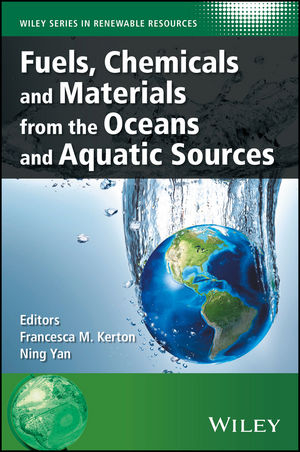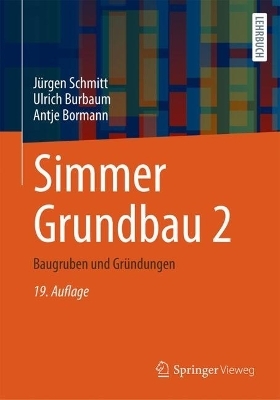
Fuels, Chemicals and Materials from the Oceans and Aquatic Sources
John Wiley & Sons Inc (Verlag)
978-1-119-11716-2 (ISBN)
- Titel z.Zt. nicht lieferbar
- Versandkostenfrei innerhalb Deutschlands
- Auch auf Rechnung
- Verfügbarkeit in der Filiale vor Ort prüfen
- Artikel merken
The book begins with an introductory chapter which provides an overview of ocean and aquatic sources for the production of chemicals and materials. Subsequent chapters focus on the use of various ocean bioresources and feedstocks, including microalgae, macroalgae, and waste from aquaculture and fishing industries, including fish oils, crustacean and mollusc shells.
Fuels, Chemicals and Materials from the Oceans and Aquatic Sources serves as a valuable reference for academic and industrial professionals working on the production of chemicals, materials and fuels from renewable feedstocks. It will also prove useful for researchers in the fields of green and sustainable chemistry, marine sciences and biotechnology.
Topics covered include:
• Production and conversion of green macroalgae
• Marine macroalgal biomass as an energy feedstock
• Microalgae bioproduction
• Bioproduction and utilization of chitin and chitosan
• Applications of mollusc shells
• Crude fish oil as a potential fuel
Editors Francesca M. Kerton, Department of Chemistry, Memorial University of Newfoundland, Canada Ning Yan, Department of Chemical and Biomolecular Engineering, National University of Singapore, Singapore Series Editor Christian Stevens, Faculty of Bioscience Engineering, Ghent University, Belgium
List of Contributors xi
Series Preface xiii
Preface xv
1 Overview of Ocean and Aquatic Sources for the Production of Chemicals and Materials 1
Francesca M. Kerton and Ning Yan
1.1 Introduction 1
1.2 Shellfish-Based Biomass 3
1.2.1 Crustacean Shells 3
1.2.2 Mollusc Shells 7
1.3 Finfish-Based Biomass 9
1.4 Plant-Based Biomass 12
1.5 Summary and Outlook 13
References 14
2 Production and Conversion of Green Macroalgae (Ulva spp.) 19
Shuntaro Tsubaki, Wenrong Zhu and Masanori Hiraoka
2.1 Production of Ulva Biomass 19
2.1.1 Land-Based Tank Culture in K̄ochi 20
2.1.2 Improvement for More Intensive Culture 25
2.2 Conversion of Ulva Biomass 27
2.2.1 Microwave-Assisted Hydrothermal Reaction of Biomass 28
2.2.2 Microwave-Assisted Conversion of Ulva Biomass 29
2.3 Conclusions 36
References 36
3 A New Wave of Research Interest in Marine Macroalgae for Chemicals and Fuels: Challenges and Potentials 43
Ravi S. Baghel, Vaibhav A. Mantri and C.R.K. Reddy
3.1 Introduction 43
3.2 Macroalgal Feedstock for Chemicals 44
3.3 Marine Macroalgae as a Biorefinery Feedstock 45
3.4 Marine Macroalgal Biomass as an Energy Feedstock 46
3.4.1 Bioethanol 47
3.4.2 Biodiesel 48
3.4.3 Biobutanol 48
3.4.4 Bio-oil 55
3.5 Advances in Cultivation Technology 55
3.6 Marine Algal Cultivation for CO2 Sequestration 56
3.7 Opportunities, Challenges and Conclusions 57
References 58
4 Kappaphycus alvarezii: A Potential Sustainable Resource for Fertilizers and Fuels 65
Dibyendu Mondal and Kamalesh Prasad
4.1 Introduction 65
4.2 Composition and Processing of Kappaphycus alvarezii 66
4.3 Simultaneous Production of Liquid Fertilizer (κ-Sap) and κ-Carrageenan from Fresh Kappaphycus alvarezii Seaweed 68
4.4 κ-Sap as Potential Plant Stimulant 69
4.5 Manipulation of κ-Sap for Sustainable Biomass Intensification of Maize 71
4.6 Bioethanol Production from Kappaphycus alvarezii 72
4.6.1 Pretreatment of Freshly Harvested Biomass 74
4.6.2 Hydrolysis of the Dry Biomass to Obtain Fermentable Sugars 74
4.6.3 Pretreatment of Hydrolysate to Reduce the Concentration of Fermentation Inhibitory Components 74
4.6.4 Enzymatic Fermentation of the Hydrolysate to Yield Ethanol 76
4.6.5 Purification of Ethanol from Fermentation Broth 77
4.7 Fuel Intermediates and Useful Chemical from Kappaphycus alvarezii 77
4.8 Environmental Impact of Fuel and Fertilizers Production from Kappaphycus alvarezii 79
4.9 Conclusion and Future Prospect 79
Acknowledgement 79
References 80
5 Microalgae Bioproduction – Feeds, Foods, Nutraceuticals, and Polymers 83
Clifford R. Merz and Kevan L. Main
5.1 Introduction 83
5.2 Microalgae and Bioproduction Methods 85
5.2.1 Microalgae Groups Considered 85
5.2.2 Bioproduction of Microalgae – Methods 86
5.3 Microalgae Feedstock Products and Coproducts 94
5.3.1 Microalgae as Animal Feed 94
5.3.2 Microalgae as a Human Food Source 95
5.3.3 Microalgae in Nutraceuticals 96
5.3.4 Biopolymers from Microalgae 98
5.4 Conclusion – The Path Forward 102
Acknowledgments 103
References 103
6 Innovations in Crustacean Processing: Bioproduction of Chitin and Its Derivatives 113
Heather Manuel
6.1 Introduction 113
6.2 Innovations in Crustacean Processing 115
6.2.1 Conventional Processing Technologies 115
6.2.2 Innovations in Crustacean Processing 122
6.3 Utilization of Marine By-Products 128
6.3.1 Processing Technologies for Crustacean By-Products 129
6.3.2 A Biorefinery Approach for Value-Chain Optimization of Crustacean Biomass Waste 130
6.4 Bioproduction of Chitin and Its Derivatives 132
6.4.1 Background 132
6.4.2 Isolation and Extraction of Chitin and Chitosan 134
6.4.3 Non-chemical Structural Modifications of Chitin and Chitosan 139
6.5 Conclusions 141
References 143
7 Recent Progress in the Utilization of Chitin/Chitosan for Chemicals and Materials 151
Bin Li and Xindong Mu
7.1 Structure, Source and Properties of Chitin/Chitosan 151
7.2 Isolation and Purification of Chitin/Chitosan 153
7.3 Derivatives of Chitin/Chitosan 155
7.4 Utilization of Chitin/Chitosan for Chemicals and Materials 156
7.4.1 Utilization of Chitin/Chitosan for Chemicals 156
7.4.2 Utilization of Chitin/Chitosan for Materials 170
7.5 Closing Remark and Perspectives 179
References 180
8 Characterization and Utilization of Waste Streams from Mollusc Aquaculture and Fishing Industries 189
Jennifer N. Murphy and Francesca M. Kerton
8.1 Introduction 189
8.2 Processing and Characterization of Mollusc Shells 192
8.2.1 Processing Technologies 192
8.2.2 Characterization of Shells 195
8.3 Applications of Mollusc Shells 199
8.3.1 Soil Amendment 201
8.3.2 Treatment of Metal Contamination and Acid Mine Drainage 202
8.3.3 Phosphate Removal and Water Purification 208
8.3.4 Building Materials 212
8.3.5 Mollusc-Derived Calcium Oxide in Catalysis 219
8.4 Conclusions 224
References 225
9 Fish Processing Waste Streams as a Feedstock for Fuels 229
Kelly Hawboldt and Ibraheem Adeoti
9.1 Introduction 229
9.2 Fish Processing By-Product 230
9.3 Chemical and Physical Properties of Crude Fish Oil 231
9.3.1 Chemical Composition of Crude Fish Oil 233
9.4 Oil Recovery Processes and Parameters 236
9.4.1 Physical/Thermal Separation Processes 236
9.4.2 Chemical Extraction Processes 238
9.4.3 Biological/Chemical Hydrolysis and Fermentation 244
9.4.4 Purification 245
9.4.5 Preservation of Feedstock and the Recovered Oil 246
9.5 Fuel Properties of Crude and Refined Fish Oils 247
9.5.1 Rheological Properties 247
9.5.2 Chemical Properties Affecting Fuel Quality 248
9.5.3 Thermal Properties 249
9.5.4 Other Fuel Properties 250
9.6 Performance of Crude Fish Oil as a Fuel 251
9.7 Upgrading Marine Crude Bio-Oil 251
9.7.1 Types of Refined Fish Oil Products 252
9.7.2 Transesterification 255
9.7.3 Pyrolysis 258
9.7.4 Microemulsification 258
9.7.5 Alternative Processes 259
9.8 Emission Comparison for Bio-Oils 259
9.8.1 Crude Fish Oil 261
9.8.2 Fish Biodiesel 262
9.8.3 Biogas from Fish Waste 263
9.8.4 Fish Biofuels from Other Processes 264
9.9 Comparison of Crude Oil and Refined Oil Performance as a Fuel 265
9.10 Comparison of Fish Biofuels 268
9.11 Summary 268
References 269
Index 277
| Erscheinungsdatum | 05.07.2017 |
|---|---|
| Reihe/Serie | Wiley Series in Renewable Resource |
| Verlagsort | New York |
| Sprache | englisch |
| Maße | 155 x 226 mm |
| Gewicht | 544 g |
| Themenwelt | Naturwissenschaften ► Chemie |
| Naturwissenschaften ► Geowissenschaften ► Geologie | |
| Technik ► Elektrotechnik / Energietechnik | |
| ISBN-10 | 1-119-11716-X / 111911716X |
| ISBN-13 | 978-1-119-11716-2 / 9781119117162 |
| Zustand | Neuware |
| Informationen gemäß Produktsicherheitsverordnung (GPSR) | |
| Haben Sie eine Frage zum Produkt? |
aus dem Bereich


